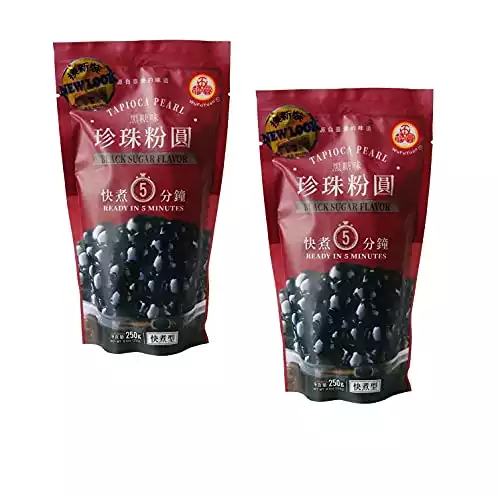Tapioca pearls are undoubtedly one of the most distinctive features of bubble tea. They are made with minimal ingredients and are highly customizable. Understanding the general process of how tapioca pearls are made, on a large and small scale, will help you to enjoy these chewy, gooey balls even more.
Ingredients
There are only two essential ingredients required to make tapioca pearls:
- Tapioca starch
- Boiling water
Optional ingredients include:
- Brown sugar
- Brown sugar syrup
Including brown sugar in the starch/water mixture gives the boba pearls their signature color without adding a lot of sweetness. More specifically, black sugar from Taiwan, often known as Taiwanese brown sugar, is utilized in traditional recipes.
Soaking the pearls in brown sugar syrup gives the pearls a sweet taste.
While these are the bare-minimum ingredients, many factories also include guar gum and other additives for longer shelf life.
What is Cassava Root?
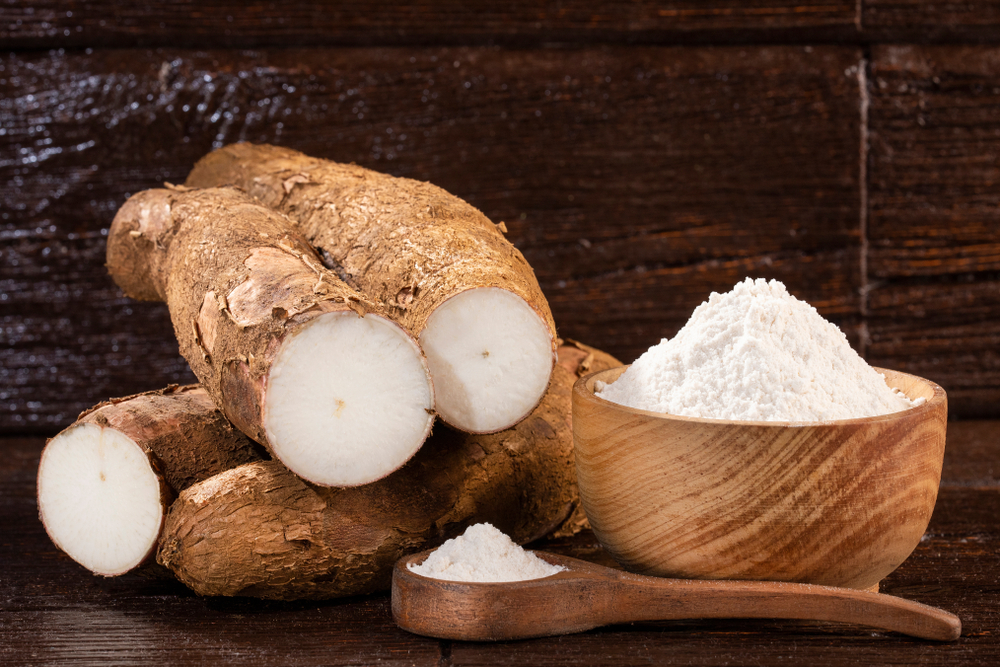
Cassava root also goes by the name Manihot esculenta or yuca. It is a starchy root vegetable that can be ground down into a powder form, also known as tapioca starch. During the Japanese colonial rule between 1895 and 1945, cassava, a plant originating from South America, landed on Taiwanese soil.
After rice and corn, cassava is the third-largest source of dietary carbohydrates in the tropics. The biggest producer of cassava in the world is Nigeria, while the biggest exporter of cassava starch is Thailand. But we have Taiwan of Southeast Asia to thank for finding a creative way to use cassava and setting the trend for bubble tea.
Tapioca starch has a slightly sweet taste compared to other flours, making it an excellent flour for dessert bread and pastries. Many recipes use tapioca starch for thickening purposes.
Tapioca Pearls vs Boba Pearls
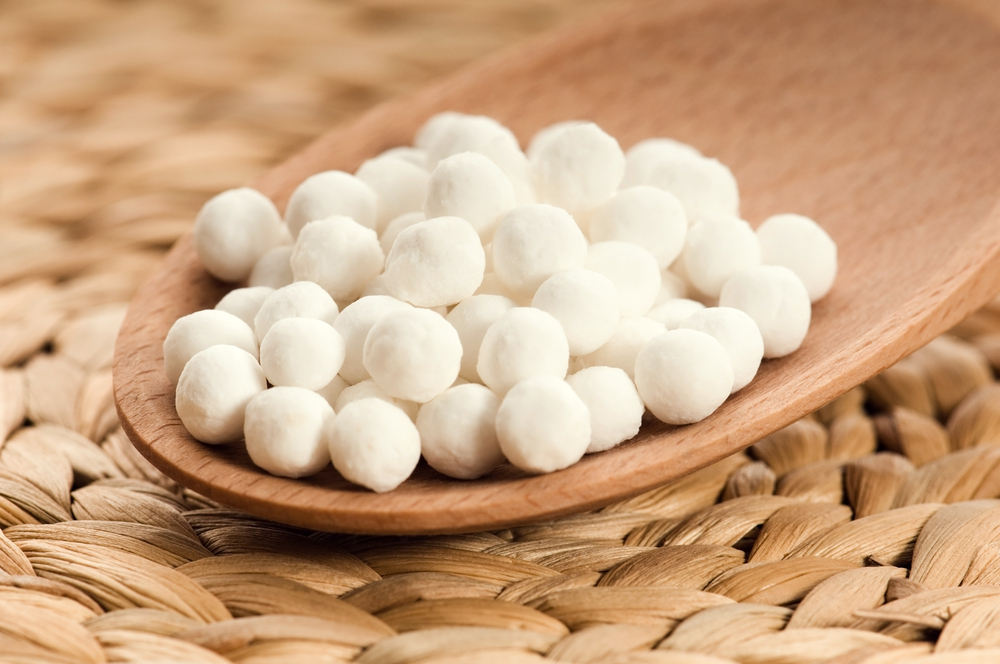
Both are chewy tiny pearls made from a base of tapioca starch and water.
Tapioca pearls are generally plain and translucent in color. You can use them to add texture to numerous desserts.
Tapioca pearls are commonly referred to as boba pearls once sugar, syrups, or food coloring are added. Black boba pearls are the most common, but the colors and flavors are endless. For example, add slightly red coloring and flavoring to the dough and syrup to make strawberry tapioca pearls.
Overall, tapioca pearls and boba pearls are the same ingredients. In Taiwanese, they refer to the chewy texture as “Q,” which they strive to create in many recipes.
How Healthy Are Tapioca Pearls?
When consumed in excess, tapioca balls can be detrimental to your health. Their few nutrients come from carbohydrates.
Dry tapioca pearls have approximately 544 calories per cup. Tapioca is less nutrient-dense than most grains and flours due to its deficiency in minerals and protein. As tapioca offers energy but nearly no essential elements, many people view it as a source of “empty” calories. The calories pile up in cooked tapioca pearls with sugar and syrups added.
But the good news is tapioca flour is a naturally gluten-free product.

Where to Buy Tapioca Pearls
You can purchase commercially packaged tapioca pearls in Asian grocery stores and supermarkets. You can also order them online on Amazon, eBay, and other retailers. They usually come in air-tight packages, and will be frozen or dried:
Some people prefer to purchase dry unflavored tapioca pearls to customize their flavor and control the desired sweetness. You can cook the pearls in a variety of ways. They can be immersed in hot water or microwaved to soften them.
Although it’s easier to have store-bought tapioca pearls for a quick boba tea craving fix, they may contain preservatives to maintain their shape and lengthen shelf life.
Can I Make Tapioca Pearls at Home?
Making tapioca pearls at home for the first time is easier than you might think. This process gives you control of the ingredients and allows you to adjust the calories, additional food colorings, flavorings, and sweeteners. The most time-consuming part is shaping the dough into tiny balls or “pearls.” Ultimately, it will be worth your while because homemade pearls are much better than store-bought ones.
Here are a few things to keep in mind:
- Tapioca starch is the suggested flour to achieve the ideal texture. Corn starch is also an option, but the texture is not as chewy. Some people recommend using almond flour or arrowroot flour for increased nutritional value.
- The cooking time may need to be adjusted depending on the size of the tapioca pearls. If starch is overheated or overcooked, the tapioca balls won’t maintain their round shape and chewy texture after cooking. They will become soft and formless.
- Make sure you have bubble tea straws, or you’ll miss the fun of sipping the ‘bubbles’ as you enjoy your beverage.
Homemade Tapioca Pearls Recipes
- With tapioca starch
- With cornstarch
If you have neither of these starches, click here to learn about other common starch substitutes used to make boba.

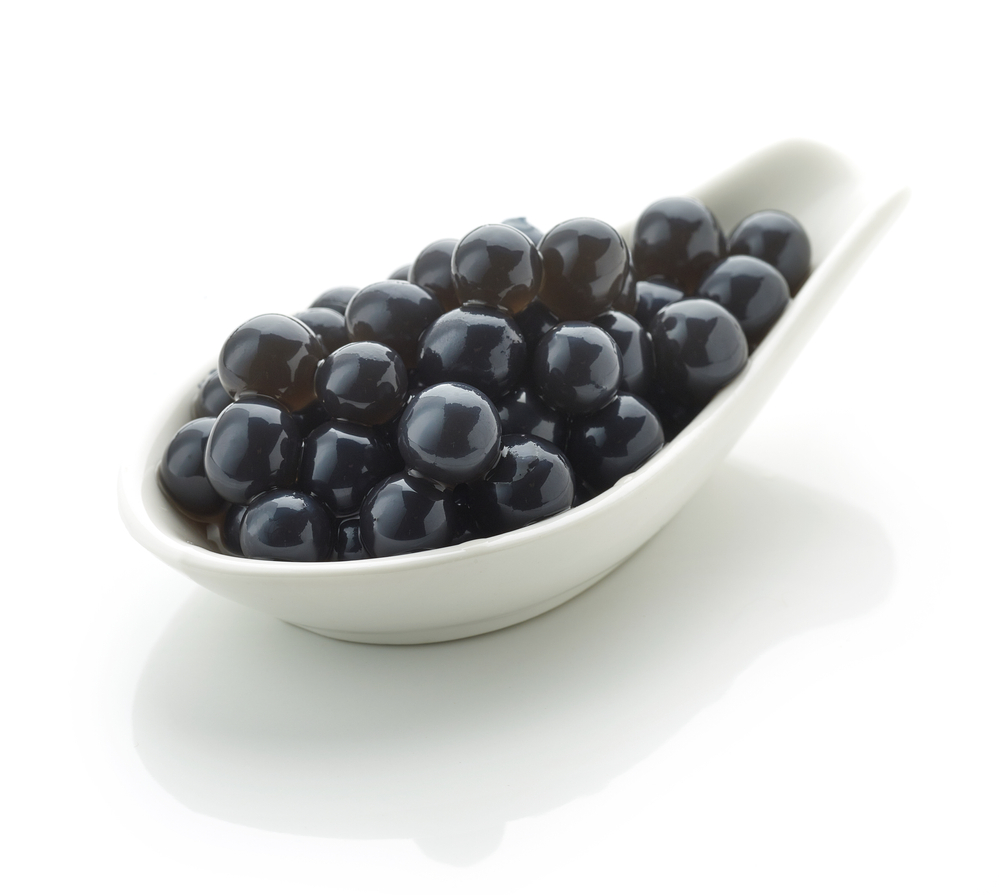
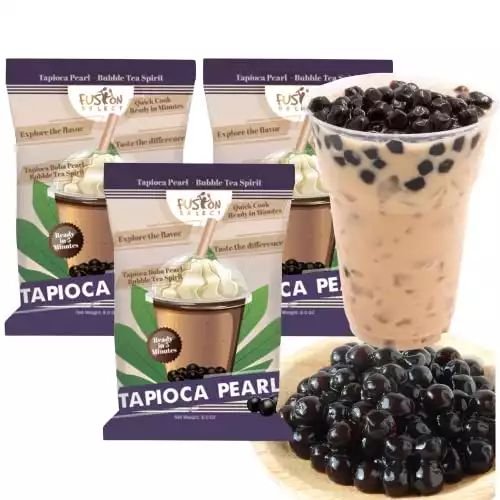
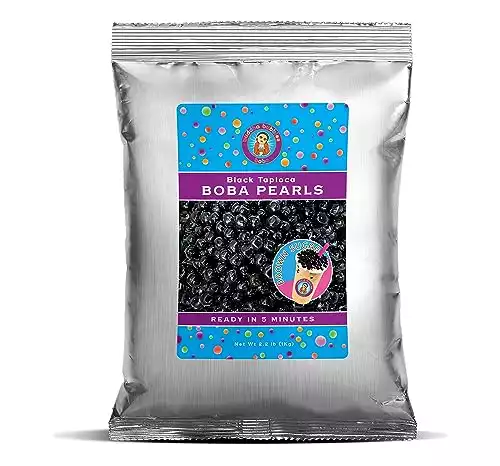
![How Are Tapioca Pearls Made? 7 Premium Grade Black Tapioca Pearls (6.6 lbs) [Bubble Tea]](https://bobabuddha.com/wp-content/uploads/2023/12/61Q0vEDQm9L._SL500_.webp)
